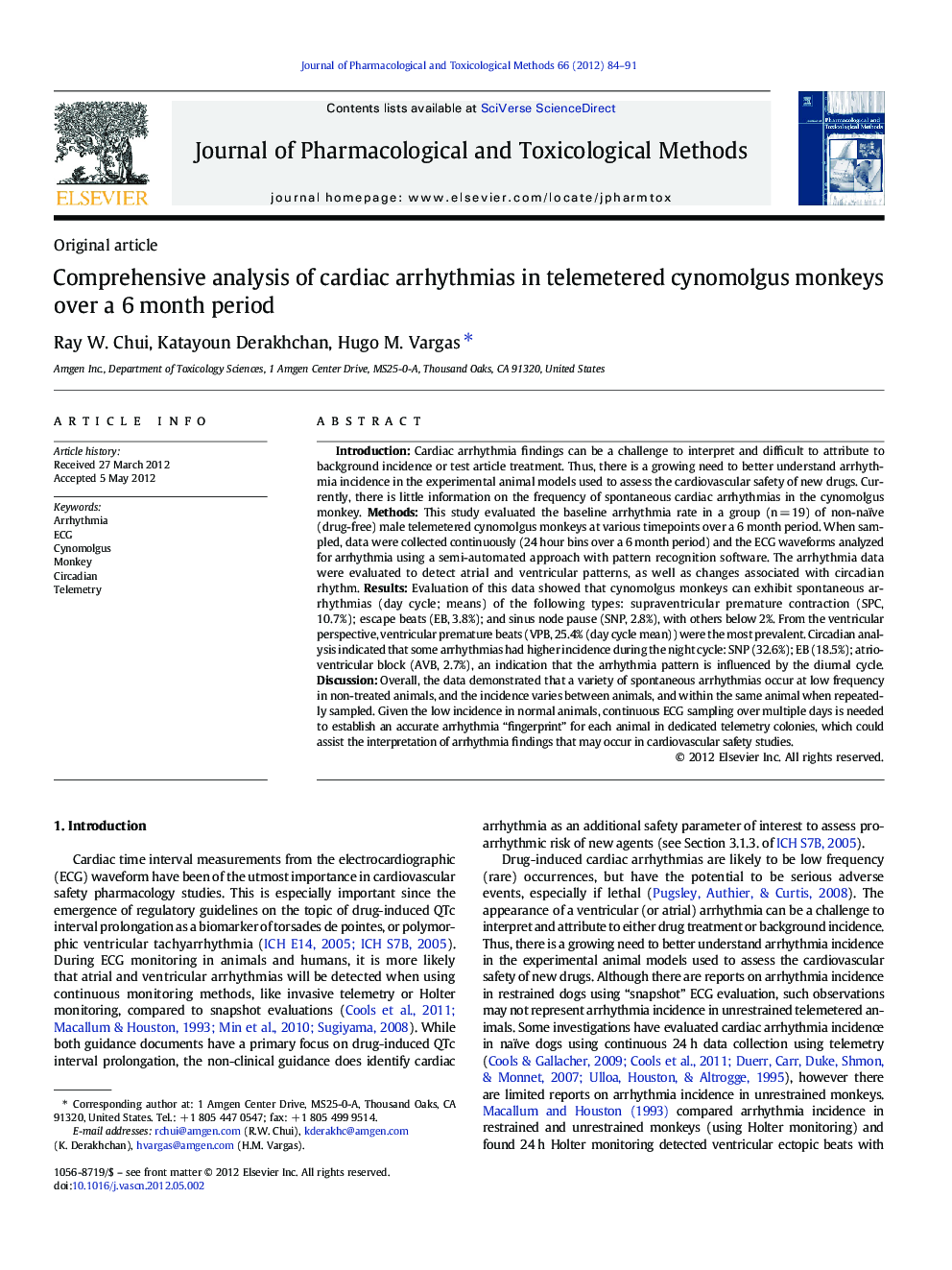| کد مقاله | کد نشریه | سال انتشار | مقاله انگلیسی | نسخه تمام متن |
|---|---|---|---|---|
| 2549233 | 1124509 | 2012 | 8 صفحه PDF | دانلود رایگان |

IntroductionCardiac arrhythmia findings can be a challenge to interpret and difficult to attribute to background incidence or test article treatment. Thus, there is a growing need to better understand arrhythmia incidence in the experimental animal models used to assess the cardiovascular safety of new drugs. Currently, there is little information on the frequency of spontaneous cardiac arrhythmias in the cynomolgus monkey.MethodsThis study evaluated the baseline arrhythmia rate in a group (n = 19) of non-naïve (drug-free) male telemetered cynomolgus monkeys at various timepoints over a 6 month period. When sampled, data were collected continuously (24 hour bins over a 6 month period) and the ECG waveforms analyzed for arrhythmia using a semi-automated approach with pattern recognition software. The arrhythmia data were evaluated to detect atrial and ventricular patterns, as well as changes associated with circadian rhythm.ResultsEvaluation of this data showed that cynomolgus monkeys can exhibit spontaneous arrhythmias (day cycle; means) of the following types: supraventricular premature contraction (SPC, 10.7%); escape beats (EB, 3.8%); and sinus node pause (SNP, 2.8%), with others below 2%. From the ventricular perspective, ventricular premature beats (VPB, 25.4% (day cycle mean)) were the most prevalent. Circadian analysis indicated that some arrhythmias had higher incidence during the night cycle: SNP (32.6%); EB (18.5%); atrioventricular block (AVB, 2.7%), an indication that the arrhythmia pattern is influenced by the diurnal cycle.DiscussionOverall, the data demonstrated that a variety of spontaneous arrhythmias occur at low frequency in non-treated animals, and the incidence varies between animals, and within the same animal when repeatedly sampled. Given the low incidence in normal animals, continuous ECG sampling over multiple days is needed to establish an accurate arrhythmia “fingerprint” for each animal in dedicated telemetry colonies, which could assist the interpretation of arrhythmia findings that may occur in cardiovascular safety studies.
Journal: Journal of Pharmacological and Toxicological Methods - Volume 66, Issue 2, September–October 2012, Pages 84–91